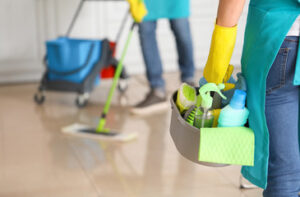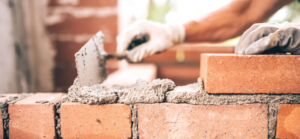Commercial Cleaning Services Baltimore can make a big difference to your business’s environment and productivity. A clean space can enhance employee well-being, create a great first impression on customers, and encourage productivity. But choosing the cheapest option may not always be the best value.

Commercial cleaning rates are determined by the complexity and scope of work. For example, a large facility with special equipment and materials can lead to higher pricing.
Commercial cleaning services are essential for businesses that want to avoid health and safety risks, improve employee morale, and increase productivity. However, these services can be expensive. The good news is that there are ways to make the costs of these services more affordable. Many cleaning companies offer per-square-foot rates that can be much cheaper than hourly prices.
These rates can vary widely depending on the type of business and location. For example, a large office building will have more rooms to clean than a small storefront. In addition, cleaning a larger space will require more time and will need more supplies. It is also important to note that one-time cleanings tend to be more expensive than regular cleanings.
Pricing a commercial cleaning job requires skill because it is easy to price too low and lose customers, or to price too high and lose profits. To avoid these mistakes, consider the following factors when estimating your service prices:
Cleaning rates are usually based on the amount of work required to clean a specific area or building. This can include the number of times a space needs to be cleaned, the level of service required, and any special requests by the customer. For example, if the space is prone to spills or other damage, it may need to be cleaned more often than other areas.
The cost of cleaning services can vary widely, from a basic office clean up to the deep cleaning of industrial spaces. Some cleaning companies offer additional services, such as refrigerator cleaning or air vent and duct cleaning. These services can add up to a substantial cost, especially for large buildings.
When determining how to price your cleaning services, it is essential to take into account the size of the building and any other special requests from the customer. You can use a bidding calculator to help you calculate these figures and find a profitable solution. The bidding calculator will take into account your production rate, square footage or area, labor costs, expenses, and equipment/supply costs. It will then provide you with a quote that reflects your expected profit.
Cost per hour
Commercial cleaning services come at various prices. Some companies offer a flat rate for basic cleaning, while others may charge per hour. The type of property can also influence the price. For example, a property with hazards like a waste dump requires a more specialized cleaning service with liability insurance that will cost more than a typical office. Additionally, some commercial properties require after-hours cleaning and are therefore more expensive.
Commercial cleaners work around business hours to ensure that businesses can continue their day-to-day operations without interruption. They may also need to work in areas that are sensitive to security or privacy requirements. Some of the more common services include dusting, vacuuming, mopping, and waste removal. Some companies will also provide additional specialized cleaning services, such as window washing, carpet shampooing, and floor waxing.
The cost of commercial cleaning services depends on the size of the facility and the types of rooms that need to be cleaned. For example, a large warehouse will need more time and a larger crew than a smaller retail storefront. Thumbtack states that the average cost of a commercial cleaning service is $25 per hour, but the rates vary depending on the needs of each business.
Another important factor is the level of demand in your area. You should avoid setting your price too low, as this will put you at a disadvantage against competitors. However, you should not set your price too high either. You need to be able to make a profit and pay your employees.
You should always be transparent with customers about your rates. Explain how you calculate your charges, and be willing to negotiate if necessary. This will help build trust between you and your clients. Having a transparent pricing structure will allow you to keep your business running smoothly and effectively.
You should always be aware of the competition in your area and how much they are charging for their cleaning services. This will give you a good idea of how much you should be charging for your own services. Ultimately, you should be able to set your prices based on your own costs and desired margins.
Cost per visit
A clean business environment promotes a healthy work culture and elevates brand equity. Commercial cleaning services are a vital investment in your company’s reputation and image. To maximize the value of your money, evaluate the cost per visit and quality of services. This will help you find a reputable and trustworthy cleaner that is able to meet your specific needs.
Commercial spaces require special cleaning equipment and tools, and can often be more complex than residential spaces. Some common tasks include tile and grout cleaning, floor scrubbing, dusting, carpet shampooing, upholstery cleaning, and window cleaning. In addition to these tasks, some companies also provide kitchen and dining area cleaning, washing facilities, laundry rooms, and more. The cost of these services varies by location and demand. In general, the more frequent and extensive the services are, the more expensive they will be.
While evaluating a cleaning service, consider the overall cost-effectiveness of its service and the long-term value for your business. A low-cost option may save you money upfront, but it could ultimately cost more in the long run due to subpar results and additional repairs. Conversely, a high-cost service may be more affordable in the long run because it will produce more consistent results and reduce repair costs.
Costs vary depending on the type of space, the size of the room, and its current condition. Office spaces generally require $150 to $400 per cleaning, while restaurants have higher demands due to hygiene standards and equipment maintenance. Retail spaces, like malls and theatres, can also cost more because of the unique design and inventory requirements.
Some cleaning services offer discounts on multiple visits or contracts. These discount rates can be especially helpful if you are looking for a longer-term agreement. The contract will typically include a monthly or weekly cleaning schedule and the cost per visit. Some services will also charge extra for specialized cleaning, such as stripping and waxing floors or disinfecting surfaces like computers and phones.
Finding new clients for your business cleaning company is a challenging task. One way to do this is to encourage your existing customers to talk about your services with their friends and family. Another way is to invest in advertising. You can also use online platforms to advertise your business, such as Facebook and Instagram. You can also offer a referral bonus to attract new customers.
Cost per month
Commercial cleaning companies offer a variety of services to help businesses maintain healthy and attractive environments. These services range from ongoing janitorial services to more specialized tasks, such as waste removal and recycling. The price per month for these services depends on the type of business and the cleaning needs of that particular space. It is important to compare quotes and references from multiple companies before making a decision.
Some cleaning services are hourly, while others are based on a flat fee that is calculated after a site visit and walkthrough. In general, larger spaces require more time and a greater staff, so they typically cost more than smaller offices or stores. Cleaning companies also charge extra for adding services such as removing debris, waxing and buffing floors, and disinfecting surfaces.
Cleaning services are a vital part of any workplace, and the price to clean a particular space will vary based on the type and size of the facility. The average commercial cleaning rate is $0.08 to $0.20 per square foot, depending on the location, size of the facility, and frequency of cleaning.
For example, a restaurant or cafe will need to follow specific sanitation guidelines and regulations. Commercial cleaning services that specialize in these environments may be able to ensure compliance and safety standards. Other types of spaces that may need regular cleaning services include banks, credit unions, and financial institutions. These spaces need to be cleaned regularly to keep them clean and professional.
The price for commercial cleaning services can range from $200-$400 per month for small offices that need basic upkeep to $2,000+ per month for large spaces that need daily disinfection and specialized cleaning services. When choosing a commercial cleaning service, it is important to look at the overall value for your budget and to find a company that offers transparency in their pricing. Moreover, it is important to ask the potential cleaners for references and testimonials. This will help you gauge the quality of their work and decide whether to hire them. You can also check the number of reviews and ratings a company has on Thumbtack to determine whether they are trustworthy.



